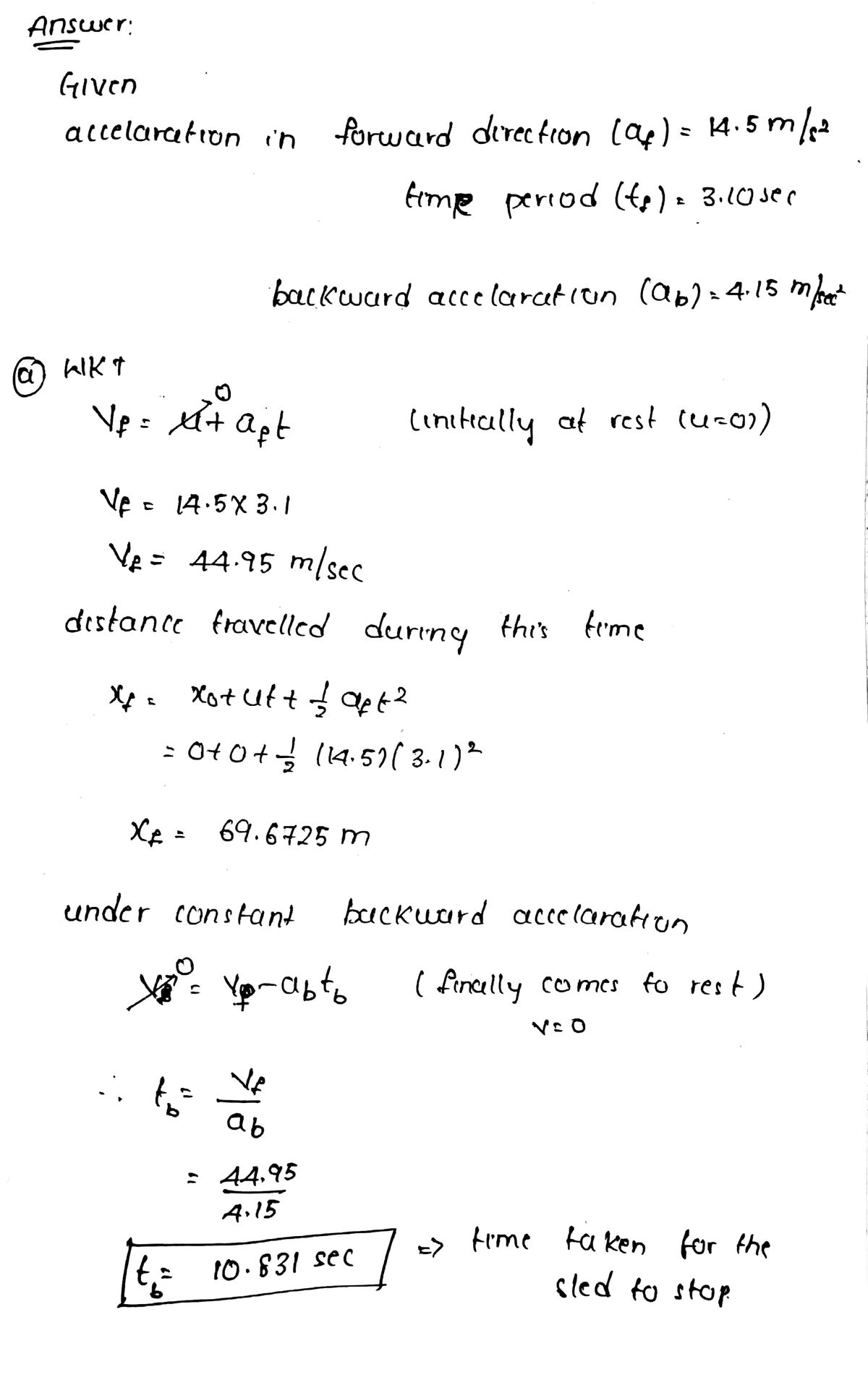Classes are canceled due to snow, so you take advantage of the extra time to conduct some physics experiments. You fasten a large toy rocket to the back of a sled and take the modified sled to a large, flat, snowy field. You ignite the rocket and observe that the sled accelerates from rest in the forward direction at a rate of 14.5 m/s² for a time period of 3.10 s. After this time period, the rocket engine abruptly shuts off, and the sled subsequently undergoes a constant backward acceleration due to friction of 4.15 m/s². After the rocket turns off, how much time does it take for the sled to come to a stop?
Displacement, Velocity and Acceleration
In classical mechanics, kinematics deals with the motion of a particle. It deals only with the position, velocity, acceleration, and displacement of a particle. It has no concern about the source of motion.
Linear Displacement
The term "displacement" refers to when something shifts away from its original "location," and "linear" refers to a straight line. As a result, “Linear Displacement” can be described as the movement of an object in a straight line along a single axis, for example, from side to side or up and down. Non-contact sensors such as LVDTs and other linear location sensors can calculate linear displacement. Non-contact sensors such as LVDTs and other linear location sensors can calculate linear displacement. Linear displacement is usually measured in millimeters or inches and may be positive or negative.


Trending now
This is a popular solution!
Step by step
Solved in 2 steps with 2 images









